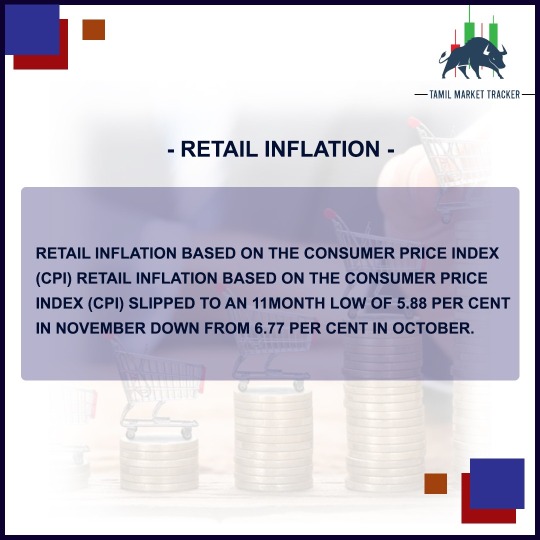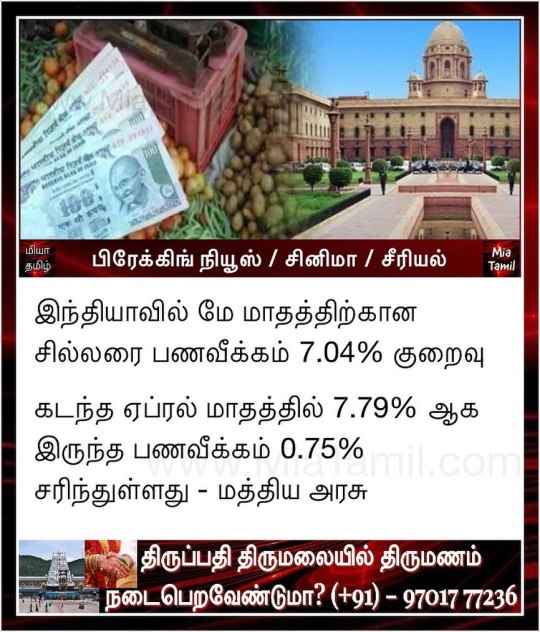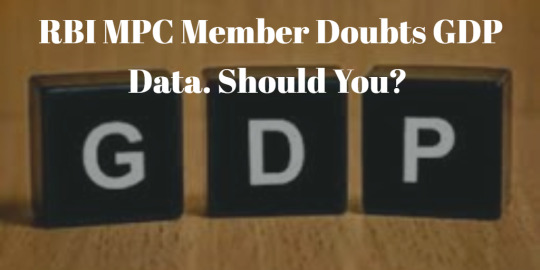#RetailInflation
Text
https://newsguru.in/fall-in-retail-inflation-rates/
#RetailInflation#SeptemberInflation#InflationRate#EconomicNews#PriceDrops#ConsumerPrices#EconomicTrends#InflationFalls#PriceIndex#SeptemberEconomy
0 notes
Text

Retail Inflation in November
0 notes
Photo

இந்தியாவில் மே மாதத்திற்கான சில்லரை பணவீக்கம் 7.04% குறைவு கடந்த ஏப்ரல் மாதத்தில் 7.79% ஆக இருந்த பணவீக்கம் 0.75%... விரிவாக படியுங்கள் 👉 https://www.miatamil.com/Retail-inflation-eases-to-7-04-in-May-News-1368797847.html #CentralGovt | #RetailInflation https://www.instagram.com/p/Cew2OJfv3S_/?igshid=NGJjMDIxMWI=
0 notes
Text
Retail inflation eases to 5.59% in July; industrial output grows 13.6% in June - Net4News

NEW DELHI: Retail inflation based on consumer price index (CPI) eased to 5.59 per cent in the month of July as against 6.26 per cent in June, government data showed on Thursday.
The inflation numbers remained within the Reserve Bank of India's (RBI) comfort level after two months.
RBI's monetary policy committee (MPC) has been tasked by the government to keep inflation in a band of 2-4 per cent, with a tolerance level of 2 per cent on either side.
In its bi-monthly monetary policy meet last week, the RBI raised retail inflation forecast for 2021-22 to 5.7 per cent due to supply side constraints, high crude oil and raw materials cost.
A deadly second wave of coronavirus infections in April and May led to many states reimposing lockdowns, constraining supply chains and leading to a spike in inflation.
However, that did not prompt the Monetary Policy Committee to raise the key repo rate from 4.0% this month as the focus remained more on containing the economic fallout from the pandemic.
In a separate set of data, the industrial production for the month of June surged to 13.6 per cent.
According to the Index of Industrial Production (IIP) data released by the National Statistical Office (NSO), the manufacturing sector's output surged by 13 per cent in June 2021.
The mining output climbed 23.1 per cent and power generation increased by 8.3 per cent in June.
The IIP had contracted 16.6 per cent in June 2020.
Source link
Read the full article
#Businessnews#Indiaretailinflation#Retailinflation#retailinflationdata#retailinflationJuly#retailinflationnumbers
0 notes
Text
RBI MPC Member Doubts GDP Data. Should You?

“Indian economy expanded at 8.2% in Q1, FY 2018-19”
Right after this news came in, Mr Subhash Chandra Garg, Secretary of Department of Economic Affairs (DEA) was enthusiastic to announce India’s progress to the world. He expressed,
“Economic performance is back to very normal. We had over 8% of quarterly growth last time in first quarter of 2016-17. Now after 8 quarters, we are at 8.2%. From 8.1% we have come to 8.2% which signals economic growth now on steady high growth path.”
Meanwhile, China has reported 6.7% growth for the April-June quarter. This helped India retain its crown of the world’s fastest growing economy.
And these days with the BSE Sensex and CNX Nifty making new highs frequently, the Indian equity markets are in celebration mode.
But not all experts are ready to take these numbers at face value.
Dr. Ravindra Dholakia, an external member of the Reserve Bank of India's (RBI's) Monetary Policy Committee (MPC) has questioned the correctness of the methodology used to calculate GDP.
According Dr. Dholakia, the new GDP series considers corporate financial data instead of Annual Survey of Industries (ASIs) to gauge the value addition from the manufacturing sector. In his view, this data gives the impression that the manufacturing sector is growing at a faster pace.
To express his views on the subject, he recently co-authored a column with R Nagaraj and Manish Pandya in the Economic and Political Weekly. He opined, “Does the new series represent a fuller description of the manufacturing value added, or is it an overestimation?”
The Central Statistics Office (CSO) claimed that the ASIs failed to estimate the output produced outside factories which causes an underestimation. Dr. Dholakia has countered this argument too.
Meanwhile, India’s Finance Minister ascribed the impressive GDP growth India reported in Q1, FY 2018-19 to the government’s fiscal prudence and a spate of reforms it introduced.
Interestingly, Dr. Dholakia doesn't seem to be in favour of 'fiscal prudence'. In the past, he has voted for dovish policy actions. In August 2017, 4 out of 6 MPC members had advocated a rate of 25 Basis Points (bps). But, Dr. Dholakia debated this for a rate cut of 50 bps. One basis point is 1/100th of a per cent.
In December 2017, five out of six members had voted for status quo, while Dr. Dholakia had recommended a 25 bps rate cut. This recommendation had surprised many, since retail inflation in October 2017 was at a 7-month high.
Minutes of the Monetary Policy Committee (MPC) conducted between July 30, 2018 and August 01, 2018, revealed that Dr. Dholakia was the only member of MPC who voted to maintain the status quo in RBI’s third bi-monthly monetary policy review for FY 2018-19.
[Read: How To Approach Debt Mutual Funds After RBI’s Rate Hike]
Having said this, his dissent with other MPC member is a healthy sign for the institution of RBI. It suggests that there’s a democracy, in the true sense, within the MPC of RBI.
It also highlights that, perhaps, Dr. Dholakia always thought the growth wasn't as 'intact' as it was perceived to be by the government and other MPC members. Notably, RBI can't forget about growth while containing inflation.
Instead of evaluating Dr. Dholakia's claims, CSO and the other government agencies will come clean about the methodology that he has challenged.
Nonetheless, the external member questing the authenticity and accuracy of the GDP data is likely to open a new battleground for the government. The 2019 Lok Sabha elections are almost around the corner.
Should investors worry about GDP growth in India?
Indian markets have generated double-digit returns over the last three decades, despite the sea-level changes taking place in the economy.
As for the question of existing controversy about GDP data, you should leave it to the experts and not speculate on the authenticity of the chart numbers.
In the last 38 years, India has clocked about 6.3% average growth rate every year. PersonalFN believes, as long as the Indian economy is growing at least at the average rate, you can rest easy.
Data as of December 2017
Note:
10 Governments of which 7 were coalition governments,
(Source:
RBI and www.parliamentofindia.nic.in),
Robust GDP growth numbers can generate substantial stock market returns, but you would benefit only if you invest correctly.
Unless you have the time, knowledge, and skills required to pick stocks yourself, you shouldn't think about taking direct exposure to equity markets. For you, mutual fund schemes would be the right option.
Remember that you can't pick up mutual funds randomly. Before investing in mutual funds, you should take stock of your existing financial situation, financial goals, and risk appetite. Once you do this assessment and arrive at the personalised asset allocation plan, you should think about investing inequity-oriented funds.
[Read: Why You Should Not Ignore Personalized Asset Allocation While Investing]
Systematic Investment Plan (SIP) remains the best option to invest in equity mutual funds which have a proven track record across time-frames and market phases. The ideal choices for you would be to look out for the ones offered by those mutual fund houses that follow sound investment systems and processes.
Editor's note:
Want to know of a time-tested strategy to invest in equities as the Sensex touches a new-high?
Looking for “high investment gains at relatively moderate risk”?
Want to invest based on a strategy adopted by some successful investors?
PersonalFN’s “The Strategic Funds Portfolio for 2025” is the answer!
You will get a ready-made portfolio of the top equity mutual funds schemes for 2025 that will multiply your wealth over the long term like never before. Subscribe now!
To know more about PersonalFN’s Strategic Portfolio For 2025, click here!
Happy Investing!
This post on " RBI MPC Member Doubts GDP Data. Should You? " appeared first on "PersonalFN"
0 notes
Text
India's Retail Inflation rate of April 2021, Consumer Price Index (CPI) number of April 2021
On 12th May, Govt. issued April Retail inflation data which is 4.29%, decreased by 22% over last month. Food inflation has also decreased sharply, more than 58% from last month.
#inflation #RetailInflation #CPI #CFPI #FoodInflation
Retail Inflation rate and CPI number for April 2021 of India has been declared on 12th May 2021 (Wednesday) by the National Statistical Office (NSO), under Ministry of Statistics and Programme Implementation (MoSPI).
Retail Inflation rate in India for April 2021 is 4.29% against 5.52% in March 2021, based on CPI (General) while the Inflation rate based on CFPI (Food) for April 2021 is 2.02%…
View On WordPress
0 notes
Photo

இந்தியாவில் மே மாதத்திற்கான சில்லரை பணவீக்கம் 7.04% குறைவு கடந்த ஏப்ரல் மாதத்தில் 7.79% ஆக இருந்த பணவீக்கம் 0.75%... #CentralGovt | #RetailInflation https://www.instagram.com/p/CeweCttBOVK/?igshid=NGJjMDIxMWI=
0 notes
Photo

INDIA'S RETAIL INFLATION LIKELY COOLED TO 5.78% IN JULY Swipe left to read more. Follow @the_unopinion for more updates #indiaretailinflation #retailinflation #supplychain #falling #foodprices #economy #economist #reservebankofindia #dailynews #news #dailynewsupdates #digitalnews #updates #newsupdates #the_unopinion https://www.instagram.com/p/CSZhisiFZg9/?utm_medium=tumblr
#indiaretailinflation#retailinflation#supplychain#falling#foodprices#economy#economist#reservebankofindia#dailynews#news#dailynewsupdates#digitalnews#updates#newsupdates#the_unopinion
0 notes
Photo

Retail inflation eases to 6.69% in August #669 #august #eases #inflation #retail #retailinflation
0 notes